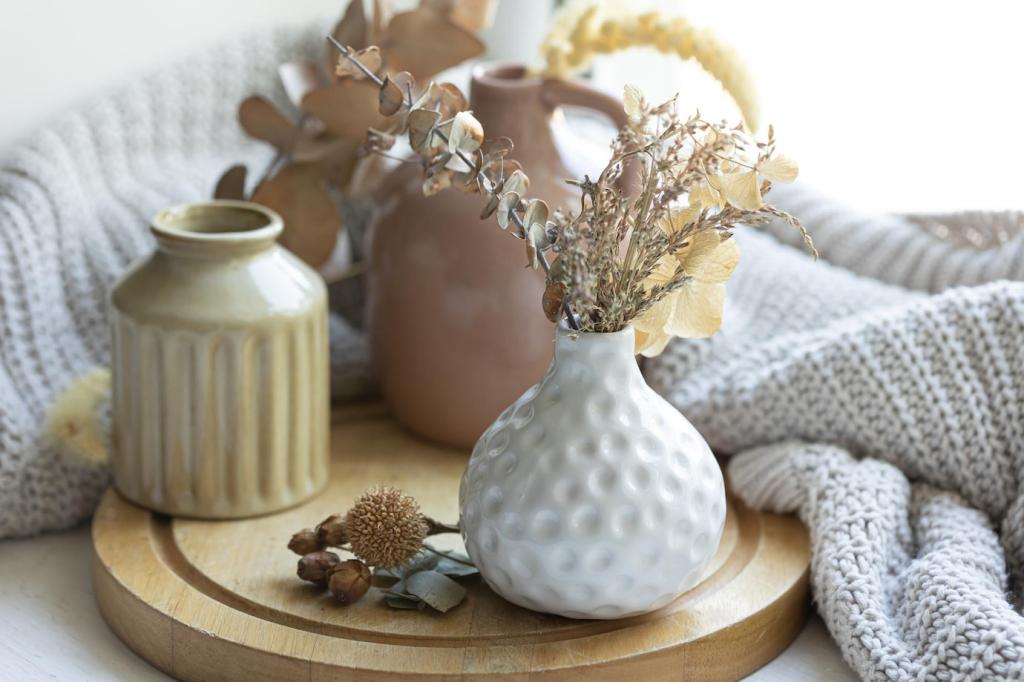
DIY Tips for Using Eco-Friendly Paints in Your Home
Chosen theme: DIY Tips for Using Eco-Friendly Paints in Your Home. Discover practical, planet-kind techniques, color ideas, and real-life stories to make your next paint project healthier, happier, and beautifully sustainable. If this theme inspires you, subscribe for upcoming eco projects and share what room you’ll refresh first.
Eco-Friendly Paints 101: What Makes Them Different
Low-VOC vs. Zero-VOC Explained
VOCs are volatile organic compounds that off-gas into indoor air. Low-VOC paints typically contain under 50 g/L, while zero-VOC are usually under 5 g/L. Expect noticeably gentler odors, fewer headaches, and faster re-occupancy. Look for verified labels like GreenGuard, Green Seal, or EU Ecolabel to ensure claims are trustworthy and performance stays strong.
Natural Binders and Pigments
Some eco-friendly paints rely on milk casein, lime, clay, or plant-based resins, paired with mineral or earth pigments. These can create breathable finishes ideal for older homes and moisture-prone spaces. The textures feel quietly organic, and colors appear soft yet saturated. Ask your local store for sample pots and test boards before committing to full-room coverage.
Health and Home Benefits
Switching to eco-friendly paints may reduce eye irritation and odor sensitivity, especially for children and pets. With lower off-gassing, your home’s air can feel fresher during and after projects. Many formulas still resist stains and scuffs, offering durability without the chemical punch. If you’ve noticed headaches from past paint jobs, share your experiences and what improved.
Prep the Planet-Friendly Way
Begin with a thorough dusting using microfiber cloths or a HEPA vacuum, then clean walls with warm water and mild, biodegradable soap. Spot-treat grease with vinegar and water instead of harsh solvents. Patch holes using low-odor, water-based fillers. These simple swaps protect your indoor air while creating a reliable surface for eco-friendly paints to adhere beautifully.
Prep the Planet-Friendly Way
Choose low-dust sanding sponges, and wear a well-fitted mask if you’re working on older finishes. Open windows to establish cross-ventilation, and use a box fan facing out to pull air through. Keep the airflow steady while painting and drying. A little planning significantly reduces airborne particles and keeps eco-friendly paints performing at their best.
Biophilic Palettes That Calm
Draw from leaves, stone, sea, and sky for restorative color schemes. Muted sage for bedrooms soothes the mind; warm sand tones ground living areas; and soft clay pink warms small spaces. When paired with eco-friendly paints, natural hues feel fresher, turning rooms into restful refuges. Snap a photo of your favorite outdoor shade and match it indoors.
A Nursery Makeover with Milk Paint
We once helped a friend transform a nursery using milk paint in a delicate, mineral blush. The finish dried velvety, with a soft hand-rubbed glow. With windows open, the room aired quickly, and the parents noticed less odor compared to their previous repaint. The calm color, gentle ingredients, and baby-safe cleanup became the family’s favorite DIY story.
Brushes and Rollers that Last
Invest in high-quality, synthetic-bristle brushes and low-shed rollers suited for water-based eco paints. Clean them promptly between coats to prevent drying at the ferrule. Wrap a damp brush in compostable paper during short breaks to reduce rinsing cycles. Caring for tools saves money, reduces plastic waste, and keeps your finish crisp project after project.
Efficient Application for Fewer Coats
Stir thoroughly to evenly distribute pigments, then cut in carefully before rolling. Apply consistent pressure and maintain a wet edge to avoid lap marks. Many zero- and low-VOC formulas level beautifully when rolled in an overlapping “W” pattern. With good primer and technique, you may need fewer coats, conserving both product and your precious weekend hours.
Liners, Trays, and Tape with Less Plastic
Choose recyclable or biodegradable tray liners, and reuse plastic liners if they remain intact. Consider sustainable painter’s tape made with natural rubber adhesives. Keep leftover paint in airtight mason jars for small touch-ups. These mindful swaps reduce landfill volume while keeping the focus squarely on your eco-friendly paints and the beautiful rooms they transform.

Safe Cleanup, Storage, and Disposal
Use a two-bucket method: the first to remove most paint from brushes, the second for a final rinse. Let solids settle, then strain and dispose of residues according to municipal guidelines. Never pour concentrated paint down drains. Eco-friendly paints are gentler, but mindful cleanup protects waterways and keeps your DIY reputation sparkling clean.
Transfer remaining paint into smaller, airtight containers to minimize air exposure. Label with room, color, brand, sheen, and date. Store in a cool, dry area above freezing temperatures. Well-kept eco-friendly paints can last for future fixes, saving money and material. Post your labeling system so fellow readers can borrow your organization magic.
If paint is unusable, check local hazardous or special waste guidelines and drop-off schedules. For still-good colors, host a neighborhood swap or donate to community theaters or schools. Turning leftovers into shared resources keeps waste low and creativity high. Share your city’s best reuse programs so others can replicate your sustainability success.

Creative Finishes and Upcycling
Limewash and Clay for Texture
Limewash and clay-based paints create matte, cloud-like movement that looks luxurious yet grounded. Apply in thin, crisscross passes to build depth, letting each layer partially show through. These breathable finishes are ideal for feature walls or fireplaces. Share photos of your first experimental patch so we can cheer your brave creative leap.
Stencils and Accent Walls with Leftovers
Put small quantities of leftover eco paint to work with stencils, arches, or color-blocking. Choose patterns inspired by leaves, waves, or mountains for cohesive, nature-forward design. A single wall transformation refreshes entire rooms affordably. Post your before-and-after shots and tell us which brush, roller, or sponge gave you the cleanest edges.
Reviving Furniture the Low-Tox Way
Scuff-sand gently, wipe clean, and apply an eco-friendly bonding primer before your topcoat. Milk paint can give a charming, timeworn look, while low-VOC enamels provide modern smoothness. Finish with a water-based, low-odor topcoat for durability. Share your thrift-store rescue stories and how the new color changed a corner of your home.
